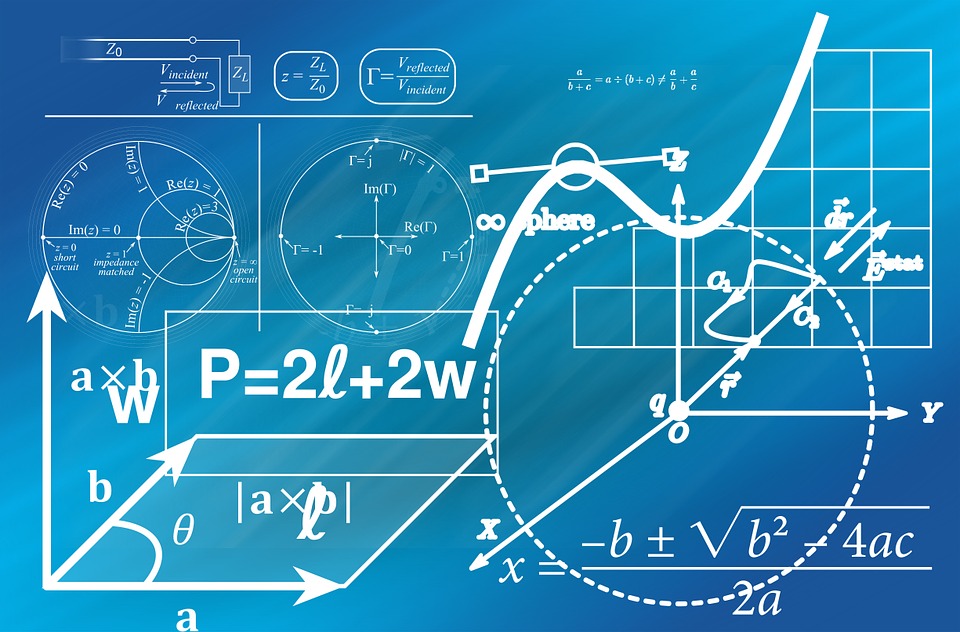Description: Ciaran is a professional Maths tutor and is pursuing a degree in Economics at The London School of Economics. He shares the relevance and importance of Maths in the real-world.
Many of us have a difficult relationship with maths. This can be for a number of reasons, most often because of our experiences at school where the frustrations and anxieties around studying maths for an exam can leave us with ‘maths phobia’ [1] that stays with us well into our adult lives.
In practical terms this is not ideal given the importance of strong numeracy skills for navigating our increasingly quantified world. But not only this, from an educational perspective it is also a great shame that so many of us feel alienated from what can be an immensely rich subject.
Mathematics is, at its core, the study of patterns which means that maths can appear in almost any setting. Although this is most obvious in the sciences, where numerical calculations and complex algebra are used to measure and model the physical world, maths can also be found in areas like music and the arts, with many great compositions and paintings using strict patterns and rules [2].
Mathematics can unlock the secrets of Bach and Da Vinci jut as much as it can aid us in our exploration of the universe. From the moon landings to Mozart, and from card tricks to cryptocurrency, maths is everywhere.
But we can go further still. Not only can we use maths to understand the beauty of the world around us, the world of mathematics itself contains many beautiful things. To give an example, there are at least two different ways to prove that there are infinitely many prime numbers. One uses a few lines of algebra, the other uses the geometry of straight lines [3] [4].
The fact that we can demonstrate the same idea with absolute certainty using two methods that are so different speaks to the power
of maths in revealing underlying patterns and truths. Furthermore, the elegance and simplicity of these two proofs illustrate perfectly one of the most important appeals of maths, the ability to make profound discoveries using only the tools of logic.
So what should we do? It’s interesting to note that Physics, for all its complexity and conceptual difficulty, has almost none of the public relations issues that maths does. One of the most important factors in this difference is arguably the prevalence of accessible physics-related content that is available to the general public. There is already a growing community of creators on online platforms such as YouTube that produces excellent educational materials to both support students with their curriculum work and to push the boundaries of their understanding, bringing new ideas and concepts from the less talked-about areas of mathematics. However, if maths is to establish itself securely within our cultural discourse, more work is needed by mathematicians and maths communicators to bridge the divide between the public and the often opaque walls of the academic sphere.
We also need to make better use of the single most powerful tool for shaping attitudes towards learning: the education system. Again, much of the intellectual burden falls upon mathematicians themselves who are needed to provide outreach and accessibility work to students and teachers alike. We might also ask ourselves as a society whether more resources ought to be used to provide
training and materials to educators in order to effectively boost our capacity to share the wonders of mathematics with young people.
Regardless of how we eventually implement change, it is vital that we begin to recognise the importance of developing a healthy relationship with maths. Mathematics and all of the beauty that it contains is part of the cultural heritage of humanity, it belongs to all of us and we should strive to ensure that we protect it.
[1] Ashcraft, M. H. (2002). Math Anxiety: Personal, Educational, and Cognitive Consequences. Current Directions in Psychological Science, 11(5), 181–185.
[2] O’Connor, J J; Robertson, E F (July 1999). “Luca Pacioli”. School of Mathematics and Statistics. University of St Andrews.
[3] https://www-users.cs.york.ac.uk/susan/cyc/p/primeprf.htm
[4] http://curiouscheetah.com/BlogMath/the-geometric-proof-of-infinite-primes/
By Ciaran F, Maths tutor in London. You can view Ciaran’s tutor video here.




